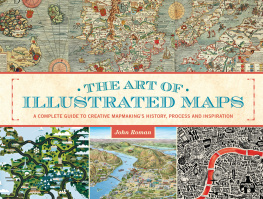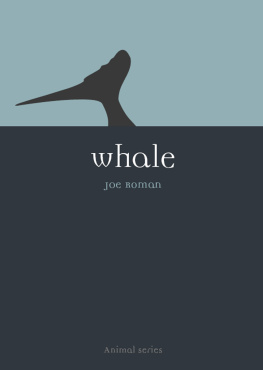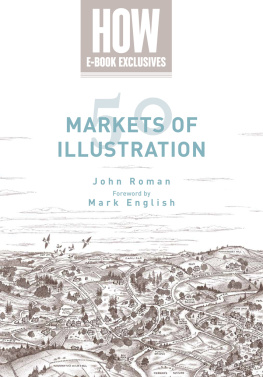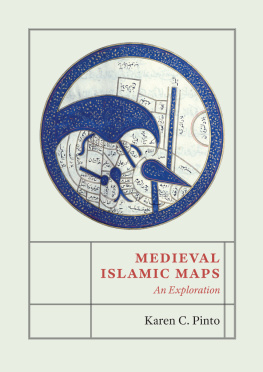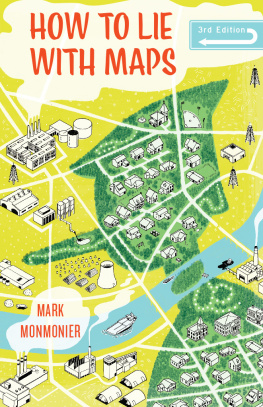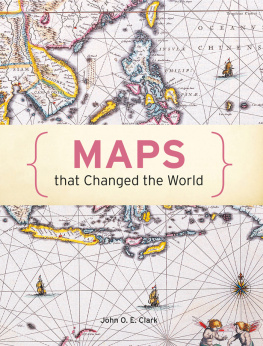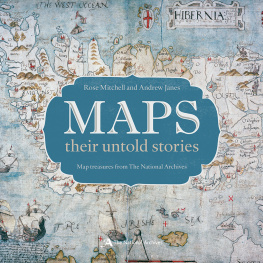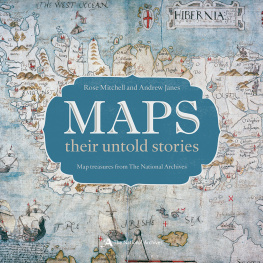Thank you for purchasing this How Design eBook.
Sign up for our newsletter and receive special offers, access to free content, and information on the latest new releases and must-have designing resources! Plus, receive a coupon code to use on your first purchase from MyDesignShop.com for signing up.
or visit us online to sign up at
http://howdesign.com/ebook-promo
For Irena, Rosie and The Chief
TABLE OF CONTENTS
PREFACE
AERIAL VIEWS
A question Im often asked (and have even asked myself in the past) is why much of my work as an illustrator gravitates toward the creation of illustrated maps. While my career has not dealt exclusively with map illustration, my most comfortable approach to solving communication problems for clients is with aerial views: maps that speak to the audience in some way, maps that explain or direct, and maps that entertain or transport the viewer to an imagined vantage point. Over the years, Ive come to realize that my attraction to illustrated map art is most likely an inherited or instinctual trait. Ill tell you a story from my childhood that shows how this interest in aerial art has been with me from a very young age.
The eldest of five boys, I was raised in Simsbury, Connecticut, a small rural town northwest of Hartford. Our two-story farmhouse sat alone on a rise at the northern end of Bushy Hill Road, framed by open fields on each side and abutted by dense woodlands to its rear. One summer afternoon when I was about twelve years old, my father returned home from work with the bed of his pickup truck filled with ten-foot-long by one-foot-diameter logs, and for the next several days he added to his stockpile of uncut timbers.
During the evenings and on weekends, on a slope of land just at the edge of the woods behind our house, Dad began constructing a small cabin-like structure with the logs. We learned that the log cabin was to be a playhouse for us boys, and when finished it stood seven feet high by eight feet wide by ten feet long with a solid, flat roof we could access from a nearby tree. It had two windows and a doorway, and the interior walls were sheathed with large sheets of white cork paneling that made the playhouse weather tight. It was a work of art, even through the eyes of a young boy.
One evening, a few days after the cabin had been completed, Dad came home with a small cardboard box tucked under his arm. Before going into the house, he called for me to follow him out to the cabin, and once in the cabin he opened the box to reveal numerous heavy-duty colored markers. These are for you, Johnny, he said. Then, pointing to one of the long, blank, windowless walls, he added, I want you to draw a mural for me on that wall. Fill that wall with anything your heart desires.
Baffled as much as startled, I asked, Draw on the wall? The whole wall? Anything? Anything, he affirmed. You decide what youd like to draw. Thats your wall now, Johnny. Go for it. At that, he left the cabin and I stood there alone with a box of markers, my gaze transfixed on the vast, blank, eight-foot canvas before me. It was the first time my father had ever acknowledged my interest in art, and I could feel the significance of the responsibility handed to me, as whatever I drew on that wall would become a permanent fixture to the cabin. The creative challenge was daunting, but it was a challenge I was willing to take. The big question in my mind was, What should I draw?
Days passed and I had made no decision on my topic. The usual ideas for a boy came to mind such as superheroes or cowboys or war scenes, but I felt a sense of seriousness connected to my choice of subject matter for this project. More days went by. Occasionally I would find myself in the cabin staring at the blank wall while my little brothers fought and played around me. I sketched ideas on scraps of paper, tested concepts with the markers on leftover pieces of the white cork paneling, and dug through magazines for anything mural-worthy. It seemed as if every waking moment was spent contemplating ideas, discarding them, and wracking my brain for additional possibilities.
A few weeks passed and I was still no closer to a vision for the wall than Id been the first day. Dad never pressured me during this period. I believe he could see my anguish and allowed my process to run its course without interference. Honestly, I do not recall consciously finding my solution, but I do remember one morning going out to the log cabin quite early and spontaneously starting to draw on the wall. I have no idea what inspired me, but I proceeded to illustrate a large, aerial vista of our home and property. The house was rendered in exacting detail and accurate perspective. I depicted the grounds and woodlands, as well as the winding driveway, the road and our mailbox complete with name and street number. My mothers vegetable garden, the clothesline, my fathers pickup truck and Moms Chevy were drawn to scale. I carefully drew the streetlight pole with its electrical wiring, the two sections of split-rail fence at our homes entrance, and our tire swingand, of course, a perfect representation of our new log cabin playhouse. When it was completed, I felt Id captured the setting and environment quite convincingly, but more importantly, I was overwhelmed with a sense of exhilaration during and after the maps creation.
Even at that early age I was dabbling with perspective drawing, but without an educated awareness of its principles. Im certain if the mural still existed today I would find technical errors that my novice eye was oblivious to. However, what has stuck with me over the years was my choice of subject matter. It was a seemingly spontaneous decision that would end up having a direct connection to my artistic specialty later on in life as a professional illustrator.
In hindsight, I can now appreciate the brilliance of my fathers plan to have me draw on the walls of the cabin. In all likelihood, it was his way of getting me to stop drawing on the walls in the house! Yet, that original experience continued to attract me to the world of illustrated maps over the years. Decades later with the writing of this book, I was faced with a new challenge, a different type of vast, blank canvas, but this time I had a clear idea of how I would compose the space.
The Art of Illustrated Maps is designed in four key sections, each intended to address specific questions and fulfill explicit functions as I chart the past, present and future of illustrated map art. The first part explains the origins of illustrated maps throughout its two-thousand-year history: the who, when and where with regard to its past. Part II deciphers why our brains are so easily able to translate conceptual map illustrations. Part III is the how-to section, complete with demonstrations of the creative process in the production of actual illustrated map assignments. And the final part of this book is a showcase of what is transpiring in todays world of illustrated maps: a gallery of numerous contemporary map artists who share my personal fondness for this unique art form and who are playing a major role in molding the future of creative mapping.
This books goals, then, are to inform and enlighten present-day map illustrators of this industrys dynamic past and its relationship to their own careers, as well as to guide non-artists toward a better understanding of and a renewed appreciation for cognitive cartography.

